Feature Image boiling water tossed at -40°C Photo Credit: Michael Davies
Water brings life and it can bring death. It can rage and destroy or bring great peace. It can even create caves made of marble. But when it freezes it becomes a whole other substance, a substance with a personality. As the seasons and years change so do glaciers and polar ice.
I met a Man of Ice
I met a man of ice on my way to Antarctica. He stood on the top deck of the ship braced against gale-force winds as though he were chiseled there of stone. His shaved head was covered with a striped knit hat, and his sunglasses rested on top. A double scarf was wrapped around his neck. A black parka kept him warm against the cold gusting winds.
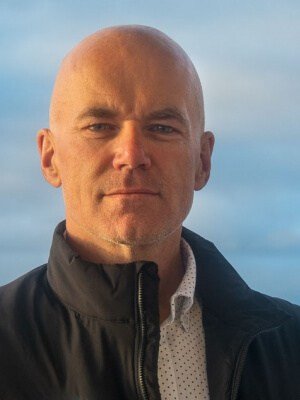
His name is David Reid. David was born in Glasgow, Scotland. When he was hired by the Hudson Bay Company, he moved to the Canadian Arctic which he now calls home.
He is an Arctic explorer and expedition guide on this trip. I stood next to him on the top deck of the Ocean Atlantic ship headed toward Antarctica. His recounting of his experiences with polar ice fascinated me. David has spent over 20 years involved in Arctic expeditions.
David is the first person to traverse Baffin Island by bicycle. Baffin Island is the fifth-largest island in the world. Most of the island lies above the Arctic circle. The journey took 10 days with subzero temperatures causing frostbite. He has completed multiple expeditions over the Northwest Passage and through Churchill, the polar bear capital of the world.
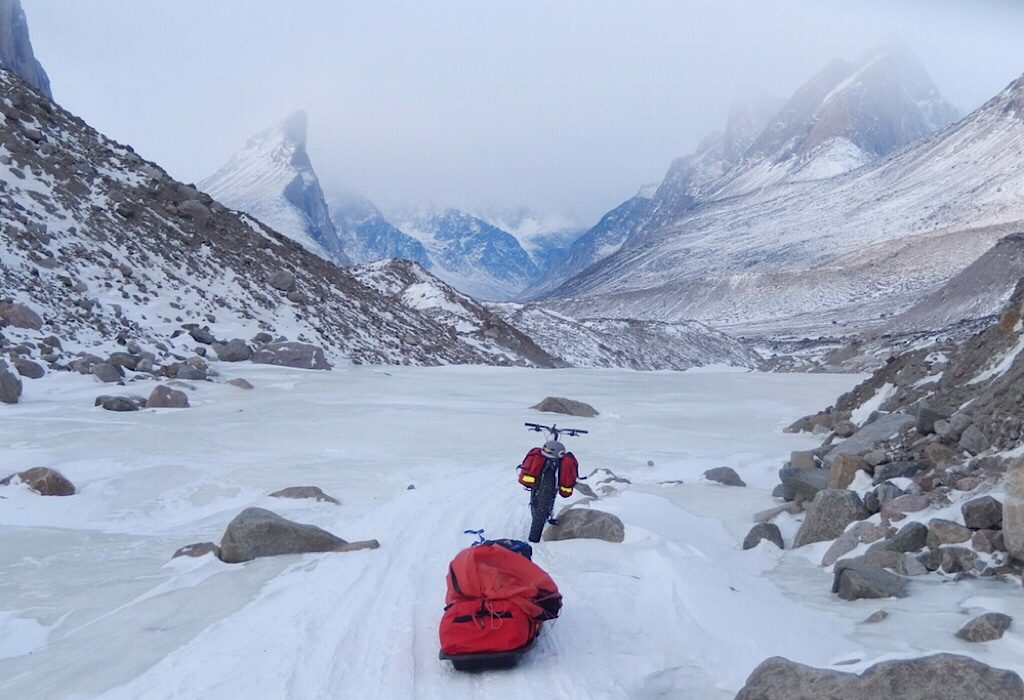
Why Do Extraordinary Things?
Why did he cross Baffin Island alone on a bicycle? I’m not sure I ever got a clear answer on this. He had previously crossed it on foot and by ski. Maybe it was to know the island more intimately. He can see the island from his home but as he talked about the voyage, it was clear that he wanted to go deeper than just the view. It was a slow, intimate journey with the island itself, a courting of nature that can fill or can kill.
The Luxury of Time and Extraordinary People
Over the past two years, I have been blessed to have the opportunity to travel slowly and enjoy the luxury of time. I have had time to listen, time to drink in nature, time to see those around me and hear their amazing stories.
I am forever curious about people who do extraordinary things. With this time that has been given to me, I have been able to meet quite a few amazing people. There was Boris who escaped Colombian guerrillas in the dark of the night, lived on the streets of Quito as a child and then grew to create a foundation for girls rescued from human trafficking. Many more that I never had the chance to write about have crossed our paths each of them providing glimpses into individuals who chose a path that was risky.
It is delightful to simply listen to their thoughts and choices. I like to know what makes them tick. This time, however, with this man of ice, an Arctic explorer, I knew that breaking through to who he really is would be a challenge.
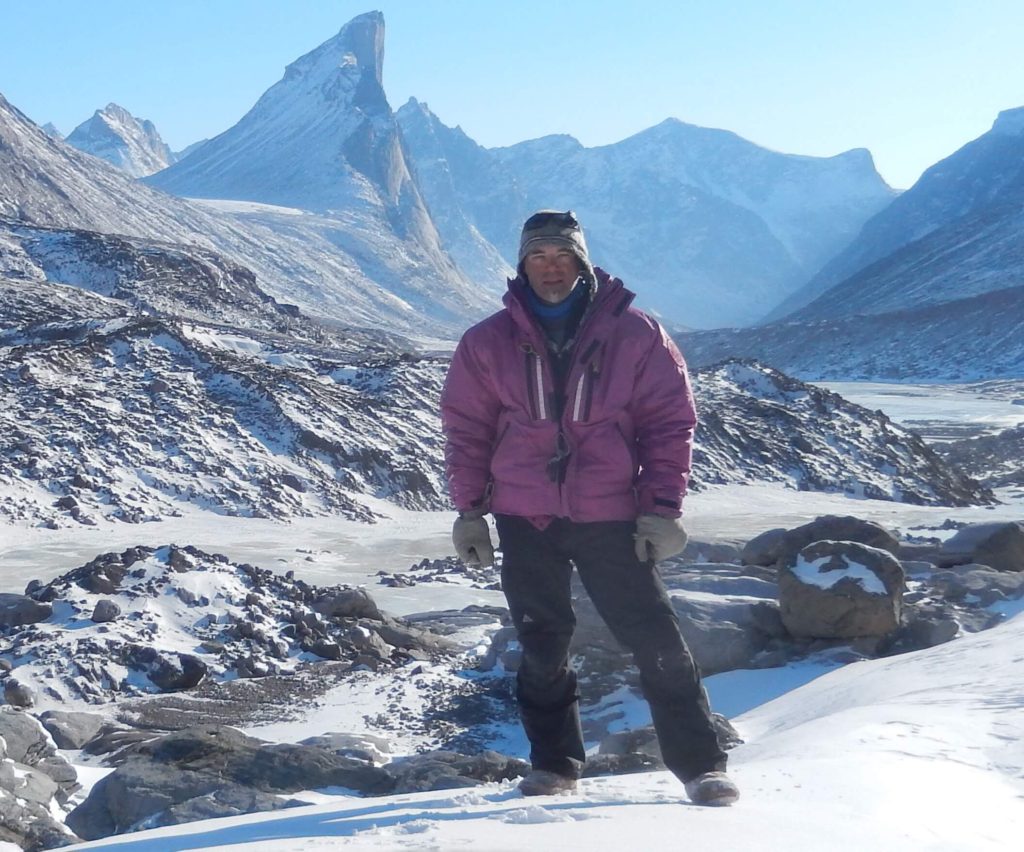
Breaking Through the Ice
David is a man with a calm and rugged exterior, his depth would be difficult to reach. I had watched as he danced during the New Year’s Eve party, there were no loose movements nor does he drink. He likes to be in control and seems to be always thinking, ready for action. Fear for David is like air in ancient ice, eradicated by pressure and controlled by David with knowledge. Fear is just a fleeting feeling that only spurs a necessary response.
David is currently training for his next expedition that will be a 40-day self-supported passage from Naujaat (aka Repulse Bay) to Gjoahaven. He and his team of three other men will begin their journey on March 27 of this year. The trek will retrace the steps of John Rae who discovered the missing link of Northwest Passage in the Arctic.
“How much of your trip is mental preparation?” I asked him as we were watching the waves roll by.
“Sixty percent is mental,” he said tapping his temple with his index finger, “and forty percent…” he trailed off, gestured toward his rock solid bicep, and gave me a knowing nod. I understood, physical training was necessary but it would not be enough to get them through the brutal conditions that await them.
To train for the trip physically he pulls truck tires across gravel and pavement and flips tractor tires taller than himself.
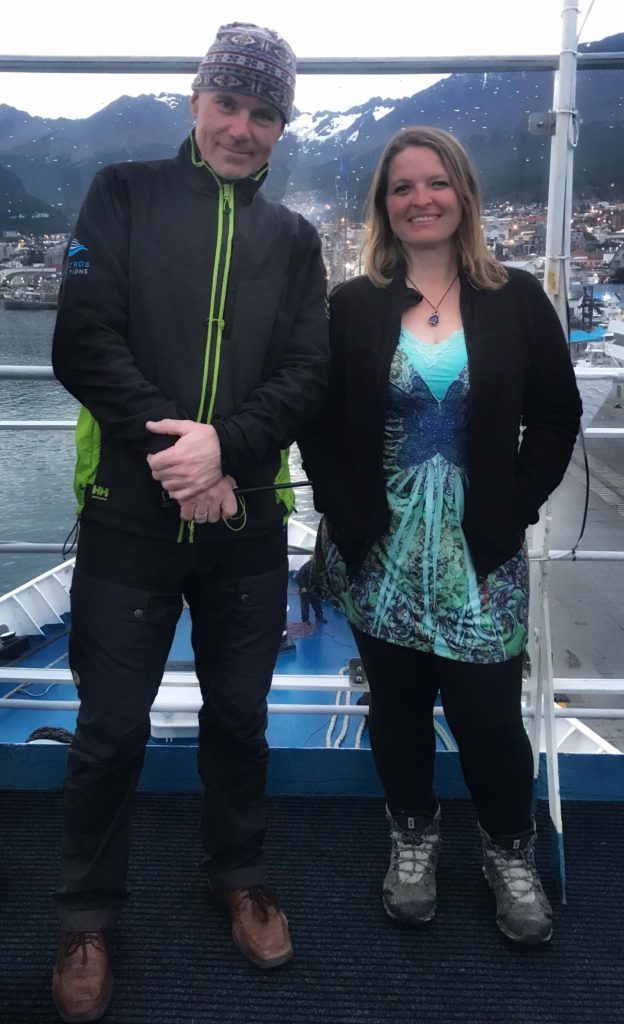
The Mindset of Survival
Mental preparation comes with preparing for the worst, they research the weather and know they will face gale-force winds and subzero temperatures. They go expecting it, they know what they will be up against. This way they don’t spend energy on the trail complaining about it. It is already expected. But as with any great accomplishment, there is more to the mental preparation than research alone.
He says that discipline is a big part of preparing mentally. When it is time to train he must put everything else down and train whether he feels like it or not. On the trail there is no choice, every day they must move forward, the discipline helps to prepare them for the physical challenges they will face.
When faced with difficulties the power to overcome it is often won or lost in our heads. I suspect that survival on the ice is just the same. Maybe it’s a determination to accomplish and overcome driven by a passion for something, be it crossing the Arctic on skis
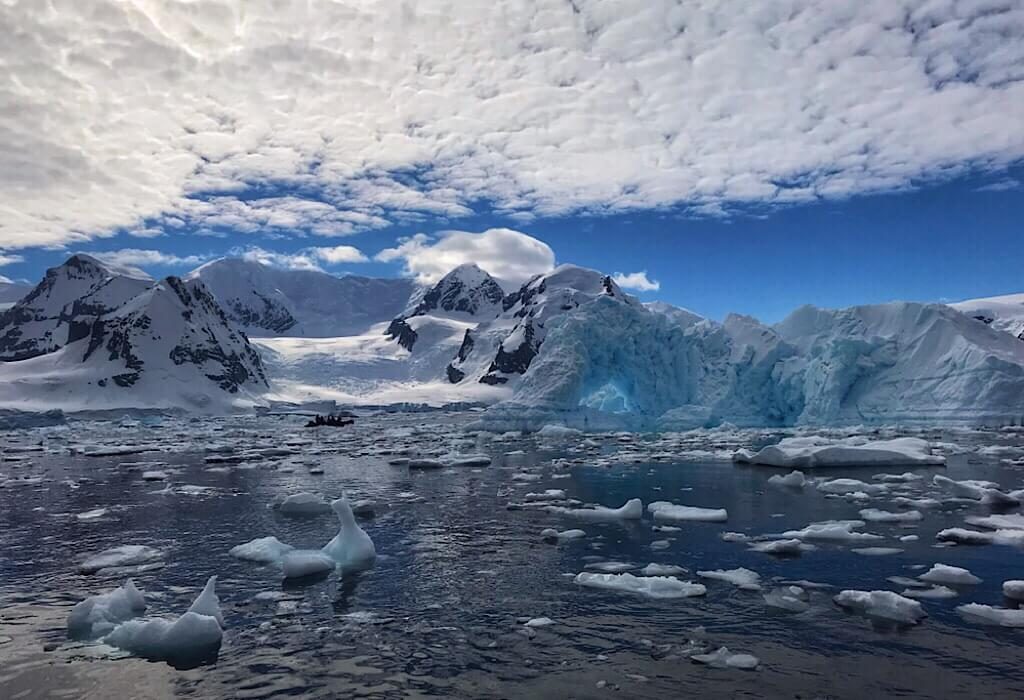
A Landscape of White and Bunny Rabbits
When David speaks of polar ice his expression changes. His eyes and face emit what words cannot say. They speak of his love for the ice as though it were part of him. It is a relationship with nature that many have never tasted.
“When you are on the ice there is no smell and there is no sound. The white landscape lulls you into thinking that everything is fine,” he says in his thick Scottish accent as we stand in the back of the Viking Lounge onboard the ship.
He pauses to think of how to describe his next thoughts.
“Our relationship with white is one of purity, innocence, and calm. We think it will do no harm and it gives us a false sense of security. On the ice the world is white, you have to fight your instincts and it requires your full attention. We associate white with bunny rabbits and virginity. It is a beauty that draws you in.”
He actually said bunny rabbits. Picture this chiseled man likening beauty to a bunny rabbit. He has a soft side in there, even if it is buried deep.

Imminent Danger on the Sea Ice
I lean closer to hear what he is saying. His voice is low and barely audible above the others in the room and the sound of forced air always present on this ship.
“Have you ever felt imminent danger on one of your expeditions?” I ask looking for a glimpse into a world I’ll only but taste a drop of.
“There was a time when the portion of sea ice we were camped on broke off from the mainland,” he says in a calm, conversational tone, “I was leading a group out onto the Arctic ice for a photo and video shoot. We had set up our camp and the bearing sticks on the sea ice.”
Bearing sticks are two sticks set up about 50 feet apart. Standing behind the first stick they are lined up like rifle sights with a landmark far away. The explorers would constantly check the sights to make sure the line doesn’t move. Movement can be the first indication of an emergency. It signals that the ice you are on has broken off from the land.
At some point, David checked the sights and saw something that would have driven most other people into a panic: the bearing sticks were no longer lined up, and he knew what was about to happen.
“It was as if someone wounded the ice and ripped it apart. The water was black as ink,” he says.
As they stood there the crack widened. Quickly the blackness became a body of water between them and the land.
They were floating out to sea.
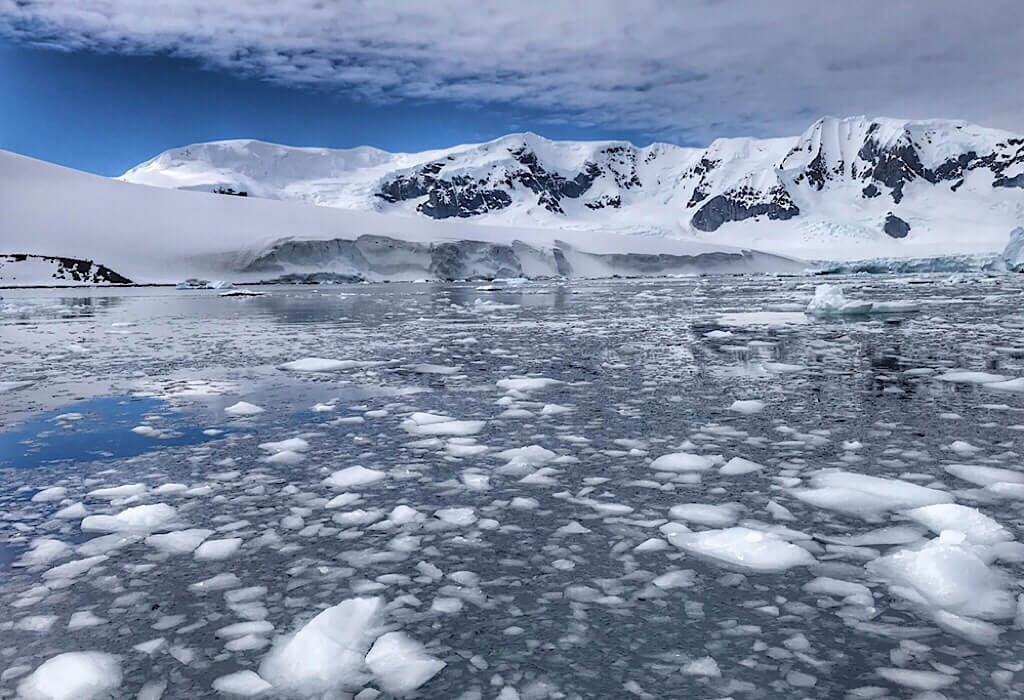
Reacting to Danger with Knowledge
“Ice is like a dynamic membrane,” David says as he began to explain the reasons why ice acts the way it does. It wasn’t nature against him it was nature acting in accordance with its properties.
“The ice can be as deep as you are tall,” he points just above my head. “But it is a membrane on the water that can break apart as the tide moves it up and down.”
He gestures with his hands the movement of a swell of water lifting one end of the ice while the other end is lowered creating a fulcrum that, after the constant motion of the water, will eventually break.
Years spent with the Inuit people have given him an understanding of the icy landscape.

When I asked him about his fear he responded with knowledge. He was prepared, he knew what to do. Now was not the time to feel, now was the time to take action. The recap could come later, feelings could be discussed later.
He didn’t waste precious time thinking about how an Inuit hunter who, after being stuck on the other side of an ice break years ago, survived three weeks floating on sea ice before the currents took him to another village where he was rescued. David simply acted.
Adrift at Sea
As their camp on the ice
“Apparently I was yelling,” he
The wound in the ice grew wider as they floated further from land and into the Arctic sea. They called the relay station and communicated their need of a rescue.
The stranded team was in the company of David’s Inuit friends. The Inuit people grew up in this frozen land so foreign to us. They don’t see the separation between humans and the surrounding world, they are part of each other. They understand the ice and its changing personality through the seasons and year by year. To them, ice is a living, breathing thing.
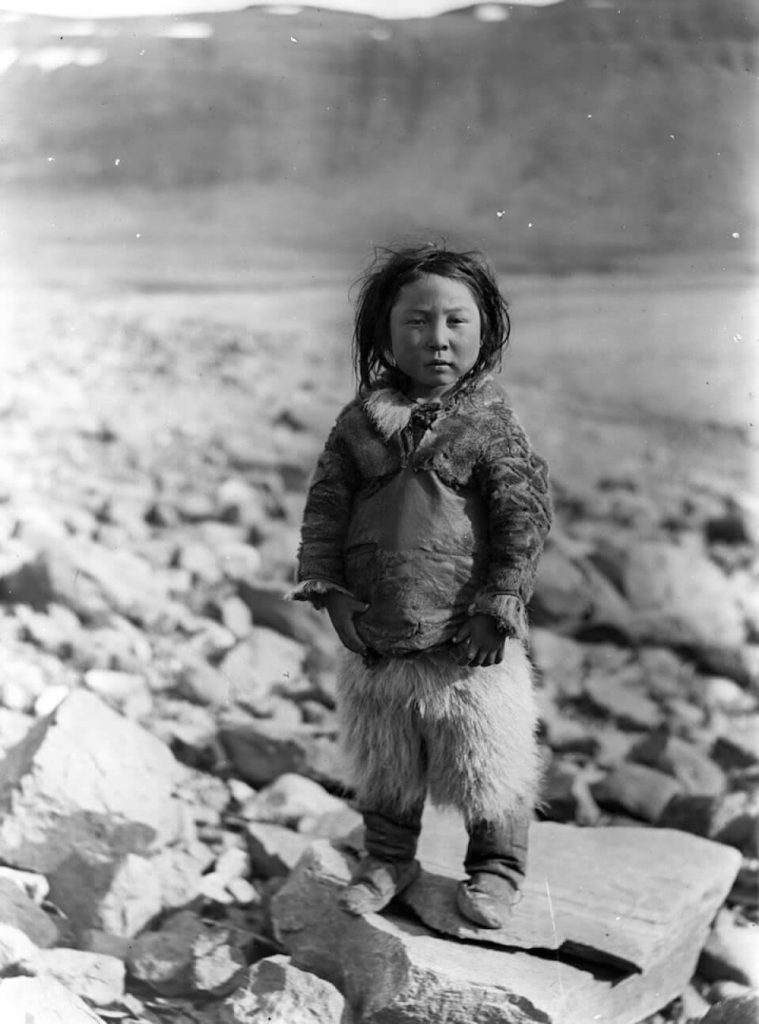
The team acted immediately to move the camp off the ice. But the gap had already grown too large to jump across or to cut off additional ice to make a bridge with.
The Man of Ice is a Poet
David has a relationship with the natural world. He knows how to feel nature and history. This was evident in the poems he would write for many of the landing sites during our expedition that we were on. He would share these poems during the recap on the ship in the evenings. One of them ended with the line “We are ice.” But he also knows when to shut it off and act.
The team on the drifting sea ice quickly packed up all the equipment then waited on the edge of the now-massive gap that would require boats to cross of which they had none.
As they waited for rescue David tried to keep the clients busy so that they did not dwell on the danger they were in. He handed out sandwiches and kept the conversation moving while they sat at the edge of the ice. They watched the black inky waters grow ever wider.

Use All Your Senses in the Arctic
Prying a story out of David is not an easy task. There is no start to finish regaling of an episode. He was adrift on sea ice and I waited to see what would happen while he talked of the Inuit’s relationship with nature and how much of society is suffering from nature deficit disorder.
He talks about his long-time Inuit friend named Elijah. One time, David showed him his new GPS that he was very proud of. Elijah made fun of his GPS.
“You need to use all your senses out here,” Elijah reminded him.
Elijah bore marks of his life so different from ours. The scars on his arm from the polar bear that once dragged him from an igloo is a testament to this circle of life. To Elijah, it was simply a story that he retold just like we would talk about a trip to the grocery store. Their way of life is intimate with nature. The hunt is more visceral. The hunt and kill made only to sustain life.
The Curious Polar Bear
“How close have you been to a polar bear?” I ask him.
In response, he places the palm of his hand against the side of his face and mimes a pushing motion. He smiles as though it was a comedy. A polar bear had come to check out his tent and while pushing on the side of the tent to see what it was, the bear inadvertently was also pushing down David’s head.
“I reached for the German-made starter pistol and pointed it out the door to shoot off a flare,” he recounts, as a way to scare off the bear. “Crawling back into the sleeping bag was simply not an option.” Freezing with fear was not an option.
Nor was freezing with inaction an option on the drifting ice that day after David had called in the rescue from a nearby Inuit village. The camp on the drifting ice was packed and ready for rescue before rescue arrived.

Rescue Arrives
“It was a relief to hear the snowmobiles approaching,” David says. The rescue team was pulling ten-foot wooden boats on wooden sleds that would ferry them back to solid ground.
David’s demeanor changes when he speaks of the ice. He, like the Inuits, understand our connection with nature. He often talks about the constant interruption of social media in our lives. They distract us from observing the world around us. They disconnect us from nature, nature that we are a part of.
Have you ever spent an entire week or longer off the grid and in nature? It may change you, it may give you a connection you have yet to feel. For even the rocks cry out in majesty, but how many of us are listening. Are you ready to find your blue
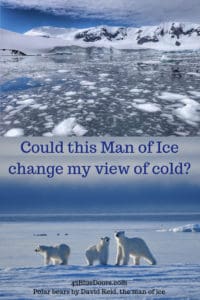

I was mesmerized reading this blog! Wow! I also enjoyed the way you spoke of determination. Isn’t that the way it is with life? To accomplish anything or do anything, you must first have the determination and desire to do it. This “man of ice” sounds like an interesting guy to talk to. So much experience and knowledge.
Jackie, He was definitely interesting. I enjoyed hearing his stories and those of the other expedition team they were a fascinating team. It is one of my favorite things about travel – the people we have met.
Great profile. Thank you for sharing!
Bonnie,
This was an absolutely an amazing blog post. How you weaved the story had me anxious for the next sentence You are at the top of your game with your writing and awesome photos. The first one with the boiling water is stunning! Would love a copy of that!
Cheers!
Thank you Susan! Many of the pictures in this post were taken by David or one of his friends. I have permissions from him to use them for this post but I don’t have rights to the originals or to share, sorry. The hot water toss is really amazing their timing was spot on.
It is a very amazing photo! A keeper! We hope to meet you both one day!
Their is such a quiet, serenity with landscapes encapsulated by ice and snow. A beautiful blog. I park my car daily under the John Rae statue in Stromness. My family emigrated from Stromness to Nova Scotia in the mid seventies like so many of my forefathers and an artist the love of the snow and ice, with its many unspoken languages has captivated my love for both nature and the beauty of the science that underpins it.
My love and fascination of the Arctic remains and a deep respect for its fragility and the people who dwell on its edge. It leaves me wordless but full of awe.
Thank you, so glad you enjoyed the blog. I would love to see Stromness someday and the John Rae statue. Eventually we will get there and maybe even to the Arctic the ice as you said truly is fascinating and like you leaves me in awe as well.